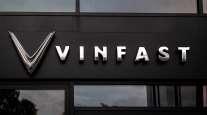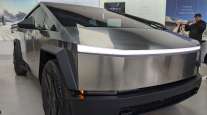Senior Reporter
Stakeholder Comments Mostly Endorse Trading Rearview Mirrors for Camera Systems

[Stay on top of transportation news: Get TTNews in your inbox.]
Despite some cautionary notes, public comment on a National Highway Traffic Safety Administration advanced notice of proposed rulemaking largely favored permitting camera-based, rear-visibility systems to replace mirrors on light vehicles and heavy trucks.
The proposal to allow the cameras, commonly referred to as camera monitor systems, was issued by NHTSA on Oct. 10 in response to two rulemaking petitions from manufacturers seeking permission to install CMS, instead of outside rearview mirrors.
The comment period on the proposal closed earlier this month.
“This ANPRM builds on the agency’s prior efforts to obtain supporting technical information, data and analysis on CMS so that the agency can determine whether these systems can provide the same level of safety as the rearview mirrors,” NHTSA said.

In general, commenters said they find the cameras offer better angles, cover larger areas, made their vehicles more aerodynamic and don’t have blind spots like mirrors.
NHTSA said that only two vehicle models equipped with a CMS in place of rearview mirrors have been offered for sale commercially, and only one of them is in production anywhere in the world, but manufacturers have announced plans to offer additional CMS-equipped models.
Although researchers have found that the CMS was generally usable in most environments and provided a better image than mirrors in conditions such as dusk or dawn, they also identified potential safety concerns.
Those have ranged from camera images that appeared to be narrow to displays that appeared very bright in certain conditions. During rainy conditions, the systems appeared to leave droplets on the lens that would obscure an image displayed to the driver.
Some of the more than 560 commenters on the proposal wanted the camera systems to outright replace mirrors, some wanted to allow both mirrors and cameras, while others, including the American Association of Motor Vehicle Administrators, asked for clarification whether the ANPRM is contemplating a blanket exemption to the current regulatory standard.
“Truck and Engine Manufacturers member companies have been conducting extensive evaluations of CMS on test trucks in real-world operation in the U.S., and some are selling trucks in Europe,” the trade organization said in comments. “CMS monitors provide a clearer image, and cameras are less likely to be subject to environmentally caused obstructions, and when the small camera lens does get dirty, the driver can clean it much easier and more quickly than mirrors.”

A camera system in a Freightliner cab. (Daimler AG)
American Trucking Associations said it supported allowing the camera systems on heavy trucks.
“Camera monitoring-system technology has the potential to dramatically improve traffic safety for our nation’s roadways for all types of commercial motor vehicle operations,” ATA wrote. “An alternate to mirrors, this technology can bring benefits in the areas of safety, advanced driver assistance systems, productivity, fuel efficiency, and driver health and wellness.”
The American Automobile Association said it may be safer to require mirrors and cameras.
“While tests showed that the addition of rearview cameras increased visibility of the rear-blind zone, they still found that rain, snow or slush could cloud the rearview camera lens, delivering blurry imagery,” AAA wrote. “These rearview cameras were not meant to replace a driver’s responsibility to check behind the vehicle physically or by utilizing inside and outside rearview mirrors.”
It’s time to move into the 21st century.
John Cunningham of Gilbert, Ariz., making a comment in favor of rearview camera systems
The Commercial Vehicle Safety Alliance wrote that an increased field of vision could increase a driver’s awareness of the location of a roadside inspector during the inspection process, but said that roadside inspectors and law enforcement officers often use mirrors to see if drivers are using a hand-held device while driving or not wearing a safety belt.
“Without traditional exterior mirrors, current enforcement methods to enforcing the rules of the road and the various safety regulations may be affected,” CVSA wrote.
One of the most colorful remarks came from John Cunningham of Gilbert, Ariz.
“Mirrors are so 20th century,” Cunningham wrote. “A well-designed camera system can give you a clearer and more comprehensive view of what’s around and behind you. It’s time to move into the 21st century.”
Want more news? Listen to today's daily briefing:




